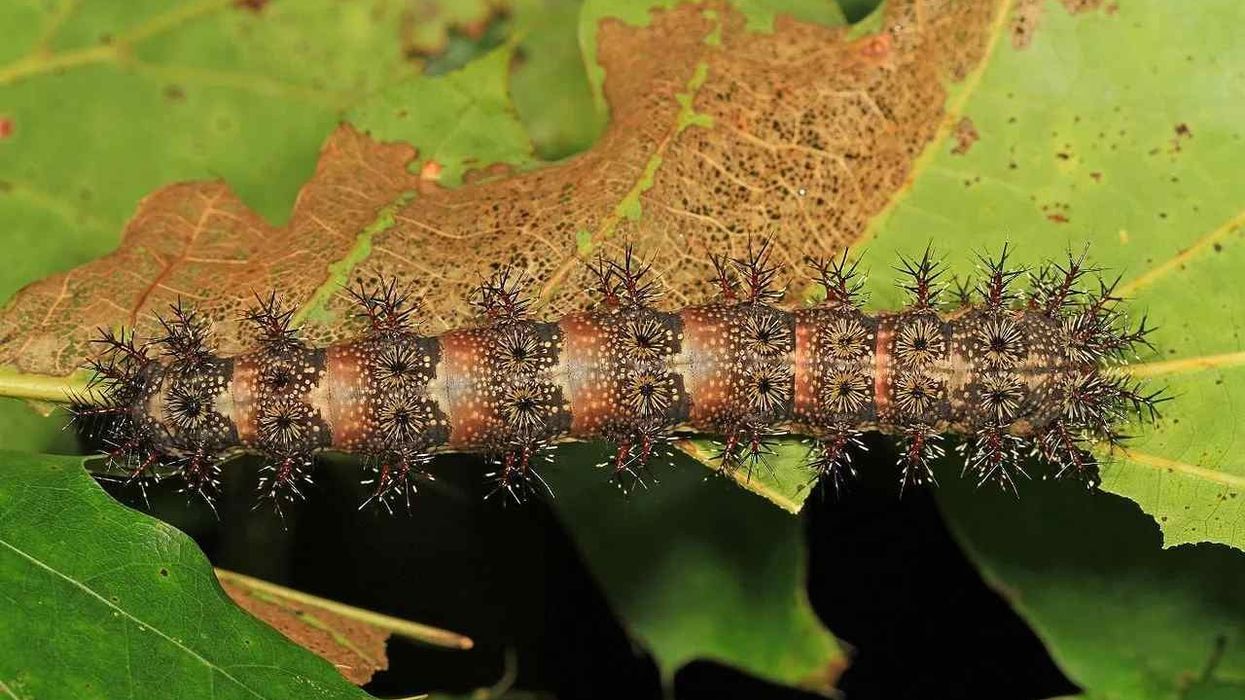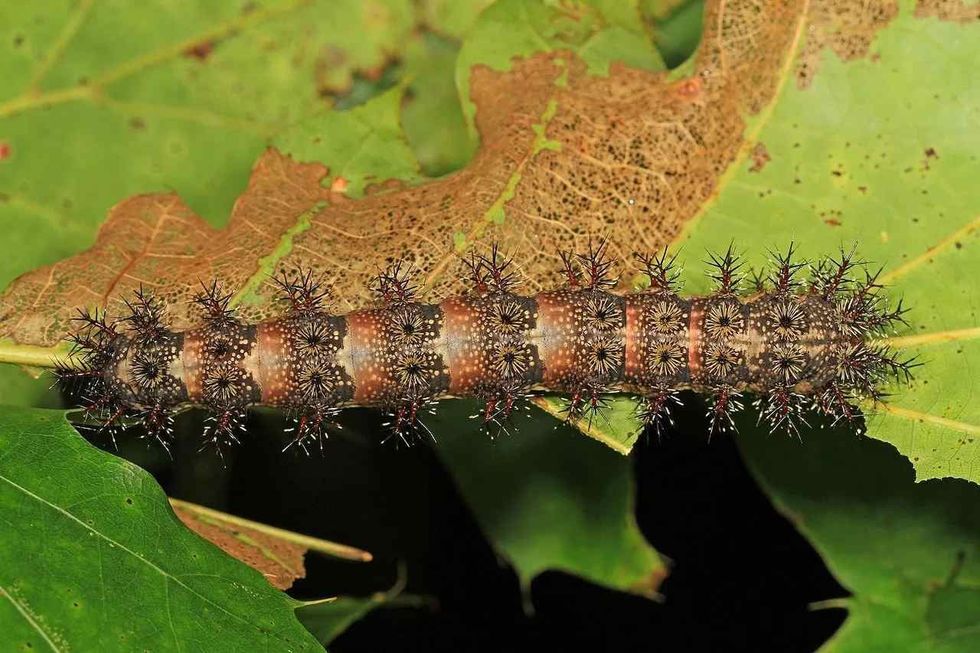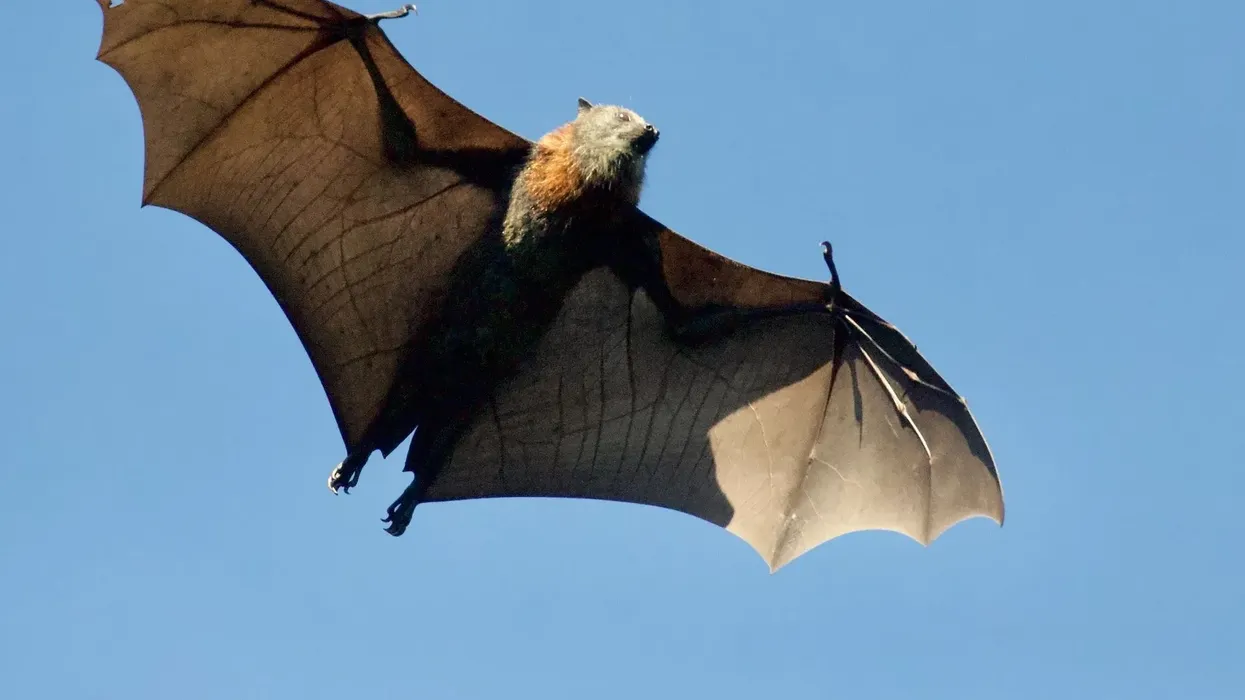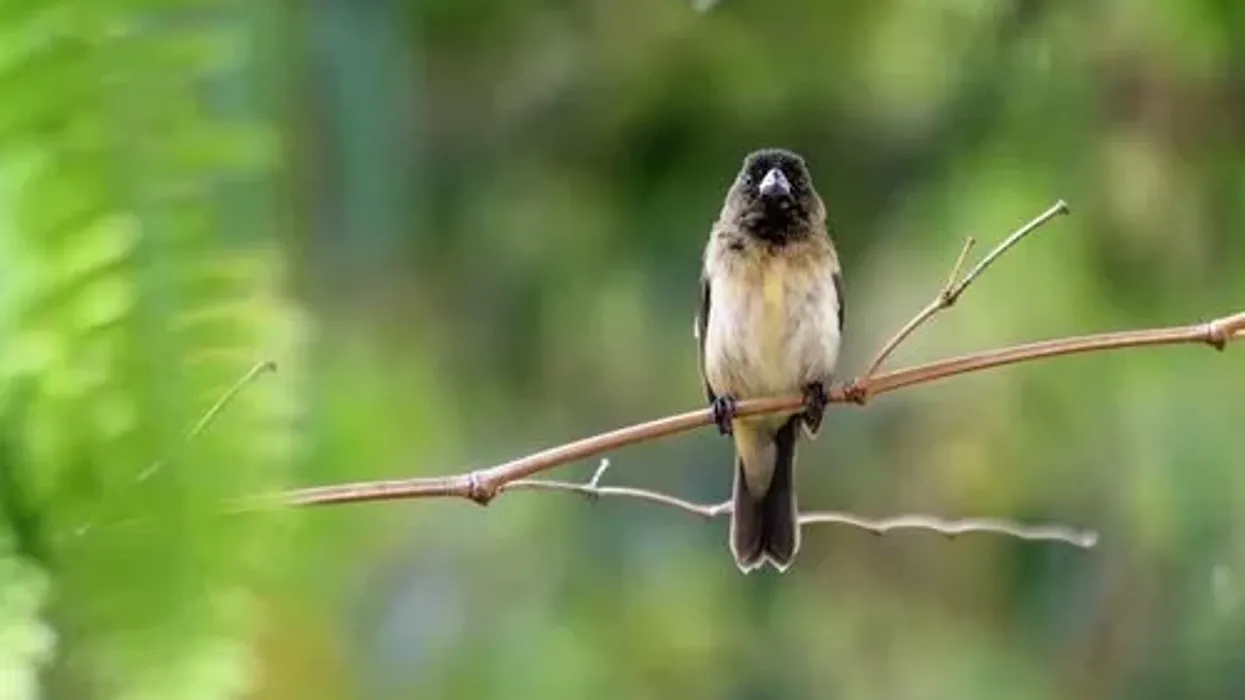Buck Moths (Hemileuca maia) are insects that are of great ecological importance. Most of the time, it is mistaken for a butterfly though these insects have unique features.
They come in a variety of shapes and sizes.
The Buck Moth (Hemileuca maia drury) has an interesting process of laying eggs as their eggs hatch and grow in the soil emerging only when the Buck Moth baby grows up.
The Buck Moth caterpillar sting from the stinging long and short spines on the body is very painful and leads to swelling and inflammation as the spines are connected to the venom glands.
Here are some of the most interesting facts about the Buck Moth caterpillar life cycle and more for you. Afterward, do check our other articles on the Five-Spotted Hawk Moth and Ailanthus webworm moth as well.
Buck Moth Interesting Facts
What type of animal is a Buck Moth?
The Buck Moth (Hemileuca maia drury) is a poisonous insect that you need to be careful of coming in contact with. Commonly mistaken for a butterfly, a Buck Moth caterpillar is an insect belonging to the family Saturniidae. This family is infamous for having their bodies covered in hair-like scales and stings that produce poison in defense.
What class of animal does a Buck Moth belong to?
The Buck Moth (Hemileuca maia drury) insect belongs to the class Insecta and phylum Arthropoda. A specific characteristic of arthropods is the presence of jointed appendages.
A Buck Moth caterpillar belongs to the genus Hemileuca. This genus of insects possesses wings that are lobbed and covered in black spots that have an eye-like appearance. Currently, 34 discovered species of Buck Moth fall into this genus.
How many Buck Moths are there in the world?
To give a proper number of these small insects is not possible since they breed in good numbers. Plenty of factors play a vital role in regulating their population across the globe.
For now, scientists have been able to discover 34 species of the same genus of Buck Moth insects and have classified them accordingly. Their range in Eastern North America extends from Maine to Florida.
Where does a Buck Moth live?
The Buck Moth caterpillar is a tree-feeding Saturniidae that feeds on various types of oak. Buck Moth caterpillars are found in the United States living primarily on oaks including scrub oak, blackjack oak, dwarf chestnut oak, and live oak. In the US they are found in Texas, New England, Florida, and Kansas.
What is a Buck Moth's habitat?
Buck Moth caterpillars are tree-dwelling insects. A Buck Moth insect houses the oak tree of various types such as scrub oak, white oak, and live oak to name some. On these trees, you may find these insects on the tree bark or the leaf litter.
Who do Buck Moths live with?
A Buck Moth may live alone or sometimes maybe spotted with fellow Buck Moth caterpillars. What is crucial for their survival is the ability to camouflage. Their body color and design aid them in hiding from predators.
How long does a Buck Moth live?
The life cycle of a Buck Moth is over a year. Their life cycle involves the systematic laying and hatching of eggs. The appearance of larvae and their conversion to become adult moths, all take a decent amount of time.
How do they reproduce?
A female Buck Moth (Lepidoptera Saturniidae) lays around 70-200 eggs in the oak leaf litter. After she lay eggs, the mature larvae hatch out of these eggs and enter the soil to pupate in late July. In October, larvae emerge as mature moth flies, and again in February, they mate to continue the life cycle.
What is their conservation status?
Even though the number of occurring moth species (Lepidoptera Saturniidae) outnumber the butterflies, the Buck Moth insect is considered an Endangered species in the United States of America. Urbanization has created a lot of anthropogenic changes in the natural habitat of these Buck Moth insects, putting their existence in danger.
Buck Moth Fun Facts
What do Buck Moths look like?
A Buck Moth fly is usually mistaken for a butterfly. The Buck Moth has a pair of wings that have black spots on them.
These spots look like an eye. Their body is covered with spines and stings, which are used for defense. Since these butterflies and moths of North America are arthropods they have two pairs of jointed appendages.
How cute are they?
Buck Moth caterpillars appear cute but are not to be touched. Their color and appearance make them attractive to predators but great defense systems make them dangerous.
How do they communicate?
Buck Moth caterpillars and moths communicate by forming an alliance and flying together and sometimes display emotions as well.
How big is a Buck Moth?
The size of the wingspan of an adult Buck Moth caterpillar is approximately 2-2.4 in (5.08-6.09 cm). They are smaller in size in comparison to a butterfly but are average-sized insects.
How fast can Buck Moths fly?
They fly at a very good speed. This aids them in protecting themselves from predators. The average speed with which they fly is 34 mph (54.7 kph). But studies have shown that they can achieve a speed of 60 mph (96.5 kph).
How much does a Buck Moth weigh?
These insects are light in weight. They weigh about 0.032 oz (0.9 g). Their lightweight helps them in easier flight. They fly higher and faster.
What are the male and female names of the species?
The male and female Buck Moth have no specific names assigned to them. Both Buck Moths belong to the Saturniidae family.
What would you call a baby Buck Moth?
A baby Buck Moth is a caterpillar. These caterpillars have stings to protect themselves against predators. The presence of this defense system is useful since they puppet on the ground in the leaf litter surrounded by a variety of predators.
What do they eat?
These insects feed on various types of oak trees. Since they inhabit these places they have adapted to a herbivorous diet. They feed on the sap for nutrients required for growth and development.
Are they dangerous?
These are dangerous creatures. They gather in groups on the tree bark and can camouflage there. If someone comes in contact with these, they may get stung by their poisonous stings.
Would they make a good pet?
They do not make a good pet. Their physical features do not make them pets to be kept in the house. Unlike dogs and cats, a baby moth that is a caterpillar is gross in appearance and may repel kids away.
Did you know...
A Buck Moth just like any other insect has a variety of ecological benefits. They are really good pollinators just like bees and bats.
Hence their presence is important for the life cycle of various plants. In the food chain, they feed birds and even humans. Hence if these creatures are in danger the whole food chain will get disrupted.
There is a lot of curiosity about what a Buck Moth looks like laying eggs but sadly not enough information is available on this fact at present.
Buck Moth stings
Buck Moth caterpillars have a lot of stings on their body. Their stings are painful and leave a burning sensation just like those of bees. It is advisable to immediately apply an ice pack in the area that has come in contact with the sting and take an antihistamine to avoid possible allergic reactions.
Buck Moth caterpillars
These have a slender body that is segmented. Buck Moths are usually dark in color and have each segment covered in several spines and stings.
To get rid of these caterpillars you can use Bacillus thuringiensis bacteria that kills caterpillars. These bacteria destroy the lining of the stomach of these caterpillars in turn killing them. Also, there are a variety of insecticides available that you can use to get rid of these insects.
Here at Kidadl, we have carefully created many interesting family-friendly animal facts for everyone to discover! Learn more about some other arthropods from our Banded Tussock Moth Facts, and Plume Moth Fun Facts For Kids pages.
You can even occupy yourself at home by coloring in one of our Buck-Moth coloring pages.










